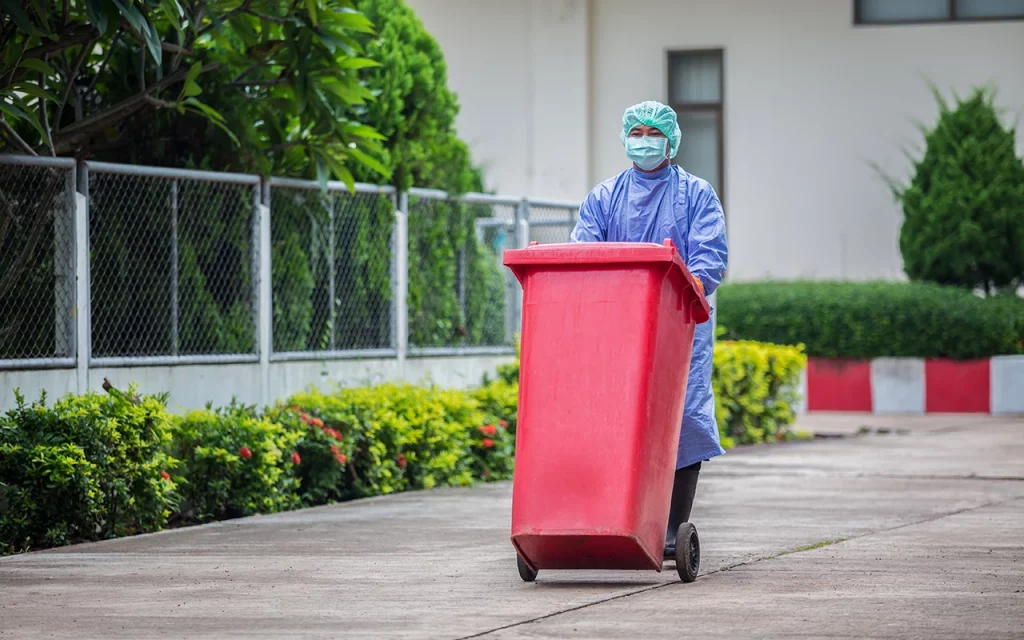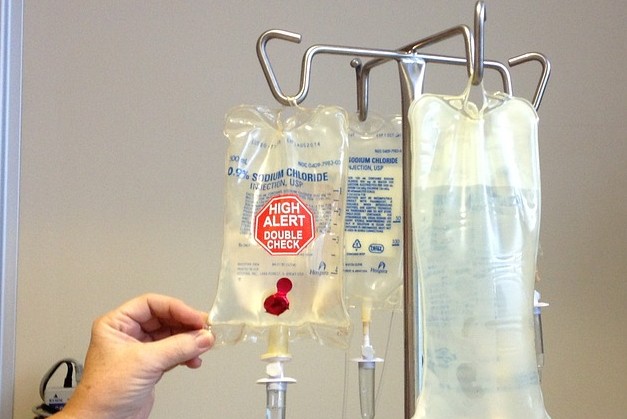Shielding Wellness: Specialist Medical Waste Removal Services for a Tidy Setting
Shielding Wellness: Specialist Medical Waste Removal Services for a Tidy Setting
Blog Article
Keep Ahead of Rules: Expert Guidance on Medical Garbage Disposal
In a world where the health care sector is frequently advancing, it is necessary for medical centers to stay ahead of regulations when it comes to the correct disposal of medical waste. From recognizing the various classifications of medical waste to applying the appropriate collection and partition approaches, this conversation will certainly offer valuable insights and workable ideas to assist facilities remain in advance of guidelines in the ever-changing landscape of clinical waste disposal.
Comprehending Clinical Waste Categories
Recognizing clinical waste groups is important for appropriate disposal and management in healthcare centers. Medical waste refers to any type of waste generated by healthcare tasks that might present a hazard to public health or the setting. It is important to classify clinical waste properly to ensure its risk-free handling, treatment, transportation, and disposal.
There are several categories of medical waste that healthcare facilities require to be acquainted with. The most usual categories include contagious waste, pathological waste, sharps waste, pharmaceutical waste, and chemical waste. Each category has certain standards and laws for its proper monitoring and disposal.
Transmittable waste consists of materials infected with blood or other bodily liquids, such as gloves, gowns, and lab cultures. Pathological waste refers to human cells, body organs, or body components that call for unique handling and disposal. Sharps waste consists of utilized needles, syringes, and other sharp items that can trigger injury and transmit infections. Pharmaceutical waste consists of run out, extra, or contaminated medicines that require cautious handling and disposal. Chemical waste consists of solvents, disinfectants, and other chemical substances used in healthcare centers.
Remaining Up-To-Date With Regulatory Adjustments
Remaining present with regulative changes is crucial for healthcare centers to make sure compliance and correct monitoring of medical waste disposal. medical waste removal services. With laws constantly progressing, it is necessary for health care centers to remain up-to-date to avoid charges, fines, and potential damage to the environment and public health and wellness
To remain in advance of regulatory modifications, healthcare centers need to develop a system for surveillance and monitoring updates. This can be done by registering for regulative newsletters, going to workshops and seminars, and actively getting involved in market organizations. Furthermore, centers must assign a team member or group in charge of staying informed and sharing information to appropriate stakeholders.
Normal interaction with governing firms is likewise vital. Healthcare facilities must develop partnerships with regional, state, and federal firms to guarantee they understand any type of modifications in regulations that might influence their waste monitoring techniques. This can be done with routine meetings, involvement in public comment periods, and aggressive engagement with regulative companies.
Furthermore, healthcare centers should consider partnering with waste monitoring firms that concentrate on medical waste disposal (medical waste disposal services with WasteX). These firms are commonly well-versed in the current policies and can give advice and support to ensure conformity
Executing Appropriate Collection and Partition Approaches
To efficiently handle medical waste disposal, medical care facilities have to develop proper collection and segregation approaches based on governing standards. Executing these techniques ensures the secure handling and disposal of possibly dangerous materials, shields the setting, and decreases the risk of injuries and infections to healthcare workers and the public.
Appropriate collection and partition techniques include using assigned containers and classifying systems. Medical care facilities need to give clearly classified containers for different kinds of medical waste, such as sharps, infectious waste, pharmaceutical waste, and non-hazardous waste. These containers need to be color-coded and clearly significant to prevent complication and advertise easy recognition.
Furthermore, health care centers should train their team on the right treatments for collecting and setting apart clinical waste. This includes educating them on the different sorts of waste, the appropriate containers to make use of, and the relevance of adhering to standards and laws. Regular training sessions and refresher course programs should be performed to ensure that team member remain up-to-date on best techniques.
Additionally, health care centers must develop a system for routine collection and disposal of medical waste. This may involve partnering with accredited waste monitoring companies that specialize address in medical garbage disposal. These business will make certain that the accumulated waste is carried and disposed of in compliance with regulative requirements.
Selecting the Right Disposal Approaches

Incineration is among the most typical and reliable approaches for disposing of particular types of clinical waste, such as pathological waste and sharps. It includes the controlled combustion of waste at heats, minimizing it to ash. Nonetheless, incineration can release hazardous toxins into the air and contribute to air contamination.

Various other disposal techniques include chemical treatment, microwave treatment, and landfilling. Chemical therapy includes using chemicals to decontaminate and counteract the waste. Microwave therapy uses microwave power to warm and decontaminate the waste. Landfilling involves hiding the waste in a marked landfill location (medical waste disposal services with WasteX). Nonetheless, landfilling should be the last option due to the possible danger of contamination to dirt and groundwater.
Ensuring Compliance Through Documentation and Training
After carefully taking into consideration the appropriate disposal techniques for medical waste, healthcare facilities have to ensure compliance with guidelines and reduce ecological influence by implementing efficient paperwork and training treatments. This action is essential in maintaining a lasting and safe setting for both healthcare employees and the general public.

Healthcare employees who handle medical waste must get ideal training on waste segregation, dealing with, and disposal treatments. By providing comprehensive training, healthcare facilities can empower their team to make informed decisions and decrease the risk of incorrect waste disposal.
Final Thought
To conclude, remaining ahead of policies in my latest blog post clinical waste disposal is important for medical care facilities. medical waste removal near me. Understanding the different groups of clinical waste, remaining upgraded with regulative changes, applying appropriate collection and partition techniques, choosing the ideal disposal techniques, and guaranteeing compliance through paperwork and training are all essential actions. By complying with these guidelines, healthcare companies can properly manage and get rid of of clinical waste in a secure and liable manner
From comprehending the various groups of medical waste to implementing the ideal collection and partition methods, this conversation will more tips here give workable pointers and important understandings to assist facilities remain in advance of guidelines in the ever-changing landscape of medical waste disposal. - medical waste disposal services with WasteX
The most usual categories consist of contagious waste, pathological waste, sharps waste, pharmaceutical waste, and chemical waste. Medical care facilities ought to supply clearly classified containers for various kinds of medical waste, such as sharps, transmittable waste, pharmaceutical waste, and non-hazardous waste. Healthcare facilities need to establish a detailed system to videotape and track all elements of medical waste disposal, consisting of types of waste generated, quantities, and disposal techniques made use of. Health care workers who manage medical waste ought to get appropriate training on waste partition, taking care of, and disposal procedures.
Report this page